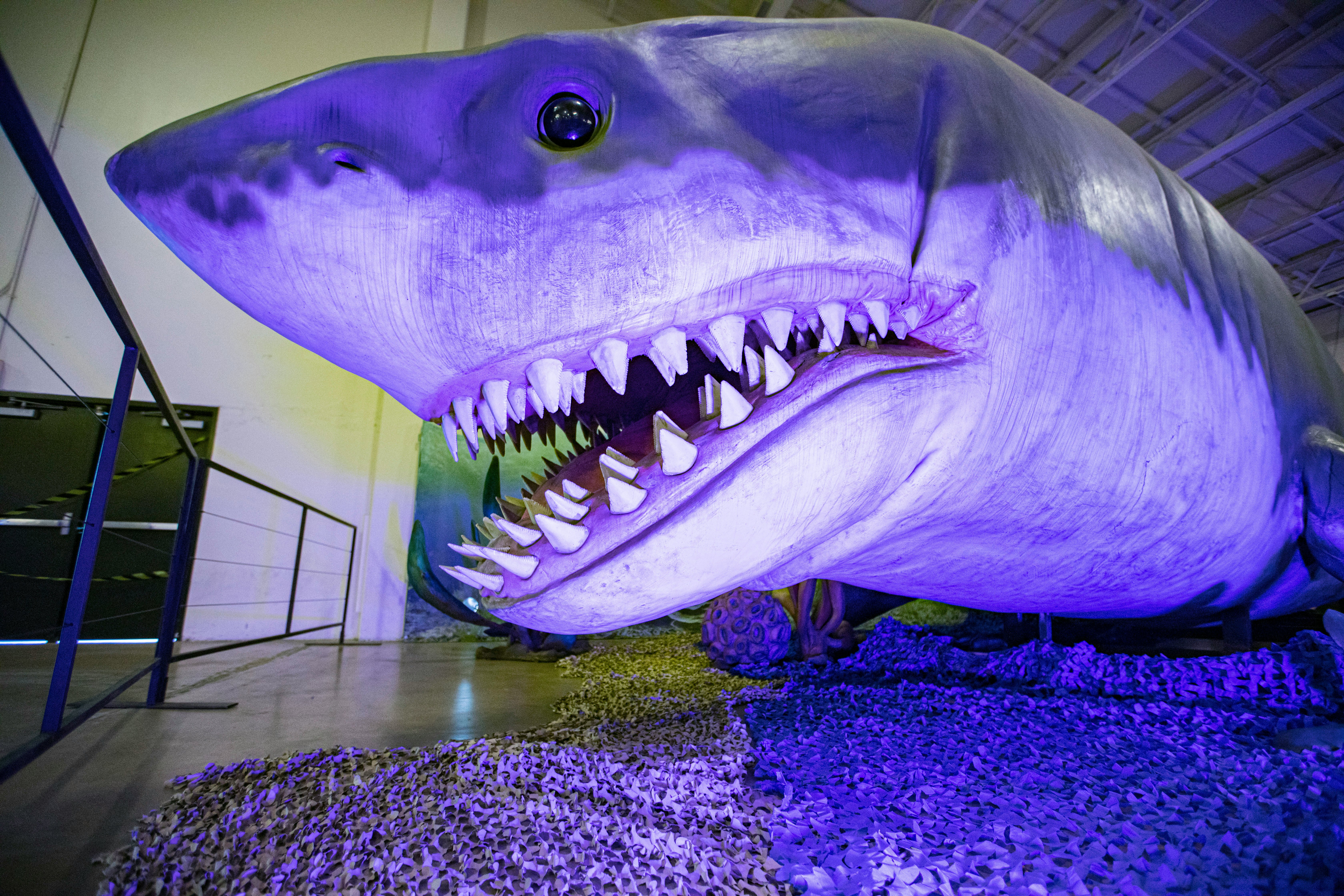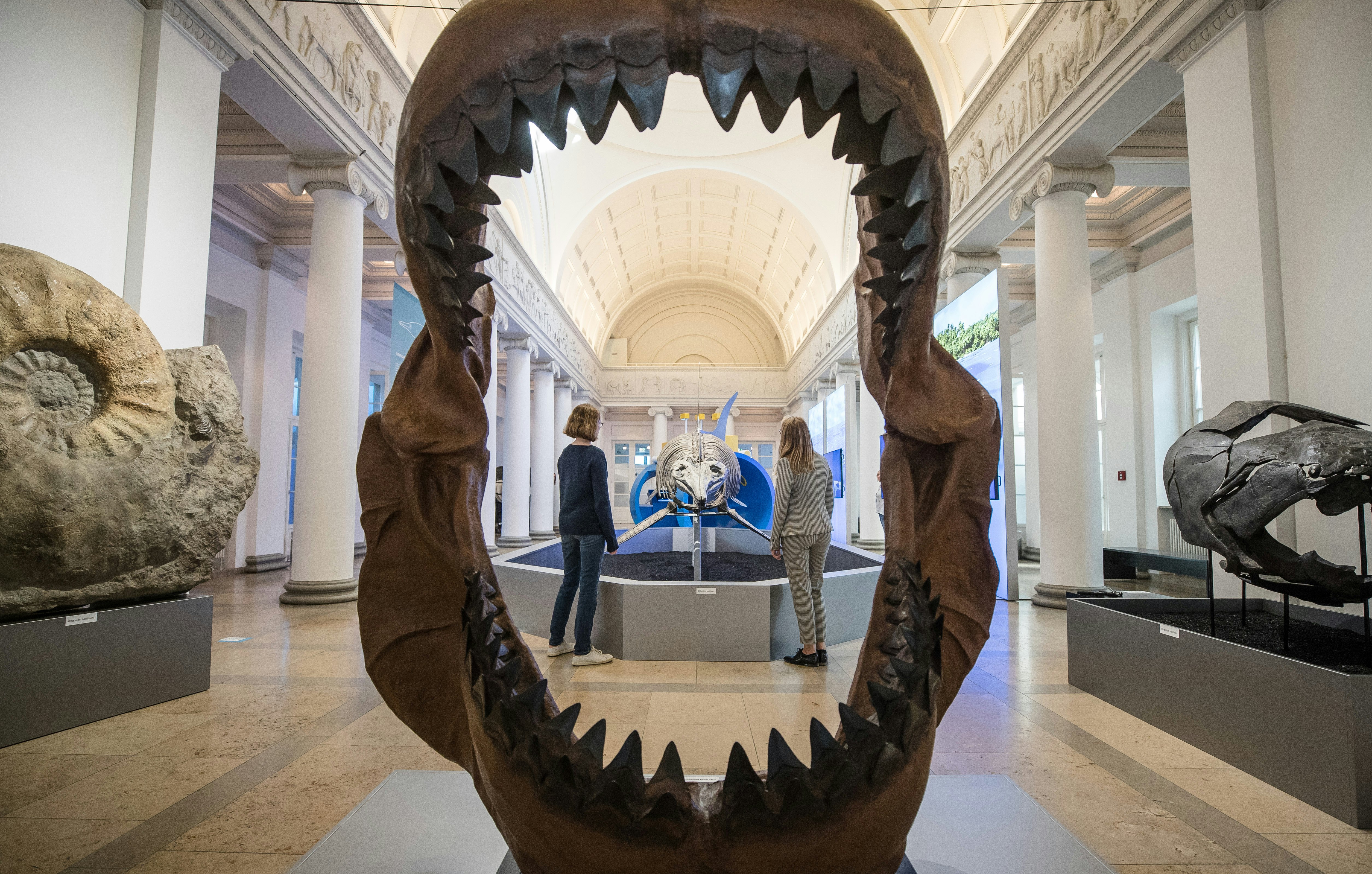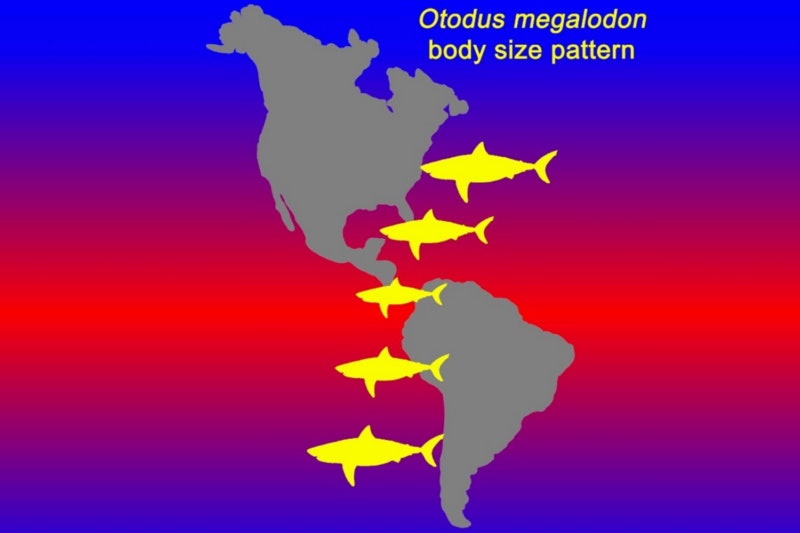
The sharks we know today pale in comparison to Carcharocles megalodon. Reaching up to 50 feet long — five times larger than a great white shark — megalodon left behind teeth as big as a human hand that can still be dug up from rivers and oceans today.
Though they went extinct 3.6 million years ago, megalodon was by far the most massive shark to ever dominate Earth’s oceans. Its fearsome presence is crystallized in museum displays and pop culture — though researchers are still piecing together what the lives of these creatures looked like.
Size was a defining element of the species. But a new study reveals that there may be an overlooked factor that influenced how large megalodons could get.
What’s new – Writing in the journal Historical Biology on March 6, researchers analyzed data from previous studies on megalodon size and location. They wanted to see if there was any correlation between how large the sharks were and where their remains were found.
Study co-author Kenshu Shimada, a paleobiology professor at DePaul University in Chicago, says the idea for the study came about on a fishing trip in the Florida Keys. “My daughter had a 'big catch' and we began discussing where large fish live, that led to a conversation about different populations of Megalodon,” he tells Inverse.

Fish size can be affected by a number of factors, but recent research has documented a correlation between the size of marine mammals and some fish and the temperature of the water they swim in. Larger animals are often found in cooler parts of the ocean, and small ones in warmer areas.
These findings line up with a principle called Bergmann’s Rule — where the temperature of an environment affects animal body size due to a need to conserve or shed heat. Shimada wanted to see if this rule applied to megalodons as well.
What they did — First, the researchers whittled down data sets from previous studies to isolate nine megalodons whose teeth had the information they needed to do a fair comparison. The teeth they selected came from the U.S., Panama, Peru, Chile, and Spain.
These megalodon’s lives spanned several million years and across two geological epochs. So, to get an accurate picture of the waters that they would have lived in, the researchers had to consider changing temperatures of the oceans over time.
After adjusting for time and ocean temperature, they observed that larger megalodons seemed to be concentrated at higher latitudes, while smaller ones clustered near the equator. “What we were surprised by was the fact that the same conclusions could have still been drawn from those previous studies if the latitude-based ancient sea-surface temperatures were considered,” Shimada notes.

They might’ve been the kings and queens of the ocean, but not every megalodon carried the same amount of heft. “Our study suggests that not all individuals grew to such a large size equally, but rather their typical maximum body sizes likely depended on where they lived,” Shimada says.
The bottom line – This study could mark the first instance of a shark species following Bergmann’s rule, and could explain how the massive shark got so large in the first place. Megalodons lived all over the globe — except for the north and south poles.
The sharks that ended up in cooler waters likely needed more bodyweight to sustain their survival in low temperatures. And in warmer waters, they needed to be smaller to avoid burning up. But what goes for the megalodon might not go for today’s sharks.
“To our knowledge, Bergmann's rule has never been explicitly recognized for any living sharks,” Shimada explains. “However, the lack of modern examples should not be taken as evidence for our idea to be false especially because of the fact that there is no comparable modern shark to Megalodon.”
And there are limitations to the current study, Shimada says. The sample size of megalodons was small and concentrated almost entirely in the western hemisphere. “It would be fantastic if more samples from a wider geographic range can be examined in the future to further test the hypothesis postulated in this new study — that Bergmann's rule applied to Megalodon,” he explains.
What’s next — The study also casts doubt on whether or not some megalodon sites that researchers have recognized as nurseries actually housed baby megalodons. If smaller adult megalodons were living near the equator, then their remains might have been misclassified as those of babies or juveniles.
“One aspect of Megalodon biology that is still poorly understood is the developmental pattern of its teeth from young to old,” Shimada says. “That is an area of research I hope to tackle in the near future.” Uncovering their growth trends could give us a more solid explanation of how the sharks formed into supersized beasts.”






